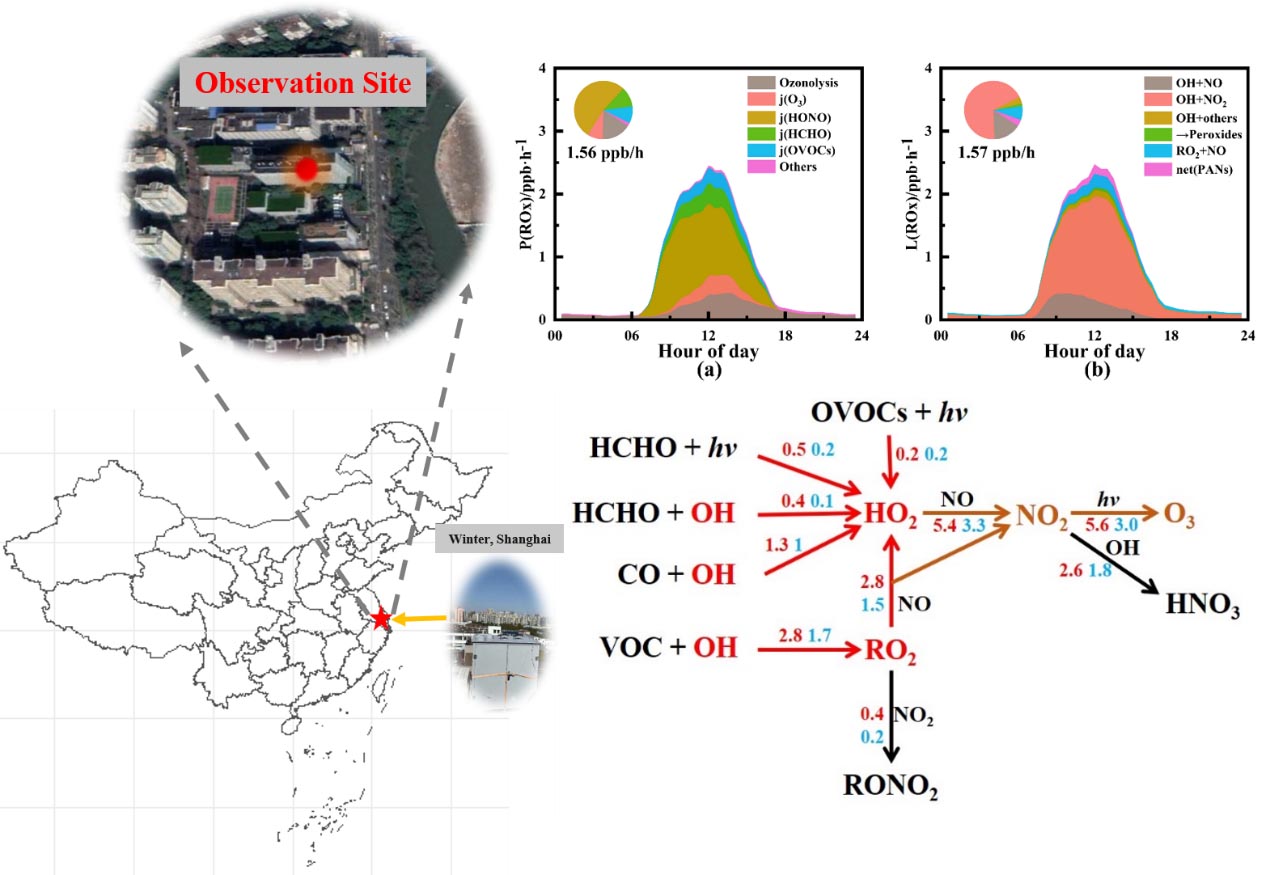
The local ozone generation was greatly underestimated with current mechanism under high NOx conditions, according to a recent research conducted by a research team led by Prof. XIE Pinhua from Hefei Institutes of Physical Science (HFIPS), Chinese Academy of Sciences (CAS).
This research, based on the observed concentration of HOx free radicals, pointed a way for future ozone pollution control.
Their findings were published in Science of the Total Environment.
Radicals are essential driving force of secondary pollution formation. Scientists have observed high level of OH radical concentrations in urban areas, and established the non-traditional regeneration mechanism. Due the distinctions on atmospheric oxidations in different regions along with defects in current mechanisms of box model, serious underestimations of ozone formation were not accidental. It is necessary to carry out researches on atmospheric oxidations in different environments.
Following a one month first in-situ HOx radicals measurement in the wintertime of Shanghai with a self-developed HOx instrument, Prof. HU Renzhi and PhD student ZHANG Guoxian, member of the team, conducted a closure analysis on megacity atmospheric chemical processes with a box model. The level of HOx radicals they observed was higher than previous wintertime observations (OH: 2.7×106 cm-3, HO2: 0.8×108 cm-3).
Considering the overview of radical concentrations, reactivities and budget channels, they concluded that the complex carbonyls-related oxidation under elevated photochemistry was a possible factor for the discrepancy of the radical sources.
This work was supported by the National Natural Science Foundation of China, the Cultivating Project of Strategic Priority Research Program of Chinese Academy of Sciences, the Natural Science Foundation of Anhui Province, and the National Key progressed in the observation and simulation of HOx radicals in megacity.

Researchers found the level of HOx radicals was higher than previous wintertime observations. (Image by HU Renzhi)